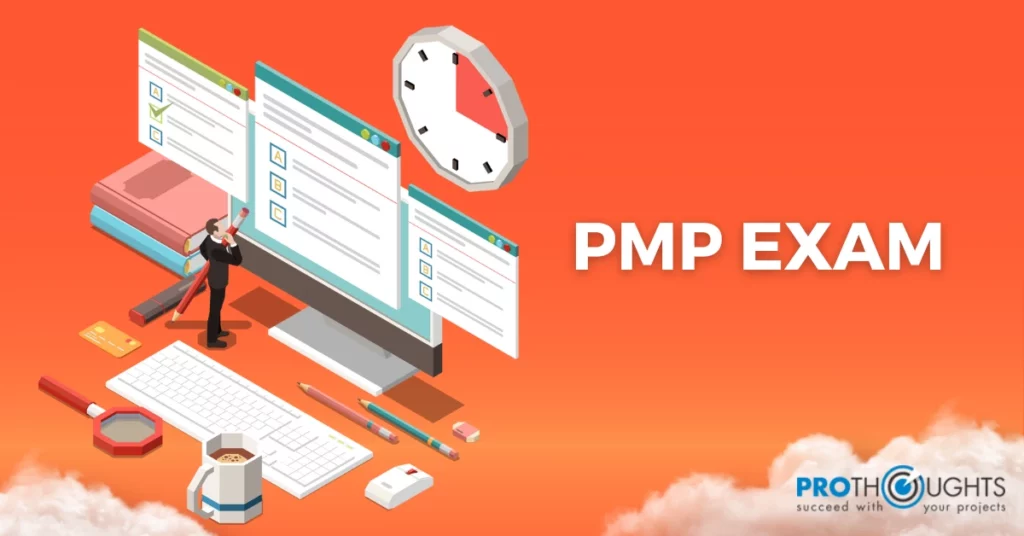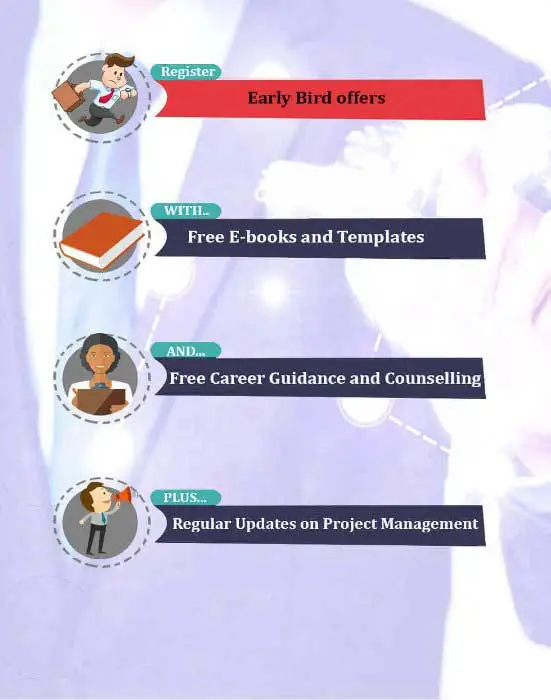
Certification as a Project Management Professional (PMP) is internationally recognized as evidence of one’s expertise in the Industry. Achieving a passing score on the PMP Exam Online is highly valued by businesses and may result in better pay and more chances!
The Project Management Insitute (PMI) defines the best practices in Project management and provides numerous benefits to those who work in the field. In addition to passing the PMP Exam, candidates must also complete experience and academic requirements in order to be granted the PMP credential.
What is the PMP Exam?
The Project Management Professional (PMP) exam is a rigorous assessment required to get PMI’s prestigious project management certification. It’s the surest method to launch a successful project management career in line with accepted norms in the field.
Since there is always a demand for qualified project managers, the PMP training for PMP exam candidates ensures that those who obtain this PMP certification are highly qualified. A project manager should score well on this test because they have the following knowledge and skills:
- Leadership.
- Team Building.
- Motivation.
- Communication.
- Influencing.
- Decision Making.
- Political and Cultural Awareness.
- Negotiation.
A project manager’s leadership is only as good as their team’s ability to communicate with one another. They’ll need top-notch people skills to pull this off.
They need to be able to share their perspective and use the new information they’ve gained through working with the team. They must also be familiar with the technical details of the undertaking.
Employers will see you in a more positive light if you have the PMP credential. For example, in the United States, the institute reports that those with the PMP course certification may expect a median pay of 20% more than those without it.
What are the PMP Exam Prerequisites?
In order to sit for the PMP Exam, you must first have your project management education and experience validated. Here are a few examples:
Instead of 35 hours of project management training, emphasizing meeting or exceeding professional norms and standards you can substitute the CAPM® certification for the PMP certification.
You require 36 months of experience leading projects if you have a bachelor’s degree and 60 months if you have a high school diploma or an associate degree.
How much does the PMP exam cost?
As of 2024, the PMP exam cost is from $575 – $595 for non-PMI members, and the PMP exam cost is $405 – $425 for PMI members. A PMI membership includes access to the discount on the PMP exam cost. The membership cost is $139 – $159 per year. The range is specified due to differences in pricing in the USA and the rest of the world.
PMP Exam Training
The time and effort required to study for the Exam is substantial and should be planned for in advance. There are numerous courses, books, and other learning materials available.
During three years, you’ll need to earn 60 PDUs through legitimate training and education opportunities to keep your Project Management Professional certification active.
How long is the PMP Exam for?
Wondering how long the PMP exam is for? As of June 2024, the following is a summary of what will be on the PMP test and how long you will have to complete it.
- Totaling 180 questions
- 3 hours and 50 minutes, or 230 minutes
- 10-minute rest periods (Twice)
- Questions of varying types (MC, MR, matching, hotspot, and fill-in-the-blank) are used.
Prime Advantages of PMI-Approved Preparation for the PMP Exam by ProThoughts:
- Make a study schedule that works for you. With the On-demand PMP Prep course, you may study at your own pace and on time.
- This PMP training can be applied towards the required 35 hours of study for the Project Management Professional (PMP) credential.
- This PMP course is designed for self-study, so it’s perfect if you like to learn at your own pace.
- ProThoughts also offers a PMP refresher course in case you want to brush up on your learned concepts.
What are the benefits of having a PMP certification?
The internationally acclaimed Project Management Professional (PMP)® certification tests a candidate’s ability to manage a professional project’s people, processes, and business priorities. Over a million people from around the globe have passed the rigorous examinations. This PMP exam is required to acquire the Project Management Professional (PMP) designation, claims the Project Management Institute (PMI). It’s helpful for project managers in various areas, including healthcare, construction, information technology, and business.
You must have the required job experience and score well on a certification exam to receive the credential.
What have been the most recent alterations to the PMP Exam Content?
Even though the Exam’s format may have changed, you should still prepare for it by understanding how your knowledge will be evaluated. The 2015 exam had 200 multiple-choice questions that spanned all five project management categories. In addition, the PM test had questions based on knowledge, situations, and formulas.
So, 180 questions on the new PMP exam, including multiple-choice, multiple-response, matching, hotspot, and fill-in-the-blank questions, will cover the updated three domains.
More scenario-based questions with animations are present on the most current PM exam to further gauge candidates’ flexibility and soft skills.
Prepare for possible questions on the PM exam that pertain to agile and hybrid approaches with the help of the Agile Practise guide.
What is the Scope for PMPs after clearing the PMP Exam?
There will always be a demand for qualified project managers. The PMP exam guarantees that those who earn this certification have the skills necessary to do the job. Successful candidates will have the following knowledge to pass this exam, which measures the three most important characteristics of project managers.
- A project manager’s ability to interact with their team members is crucial to their leadership success. They need strong interpersonal skills to accomplish this.
- The PMPs need to be able to explain their perspective and use the information their team has given them to complete the task.
- They also need to have a firm grasp of the mechanics of the work at hand.
What are the three categories for the questions in the PMP Exam?
-
The People Section takes up 42% of the exam.
The People element, which accounts for just under half of the total score, covers areas such as team management, conflict resolution, virtual team assistance, and mentoring.
2. The Process Section takes up 50% of the exam.
So, the process test evaluates how well you understand the steps required to bring a project to fruition. Questions about planning, budgeting, responding to project changes, and selecting an appropriate methodology are all on the table.
3. The Business Section takes up 8% of the exam.
The business environment section of the Exam covers several topics. Such as compliance, value delivery, and organizational transformation that you should expect to deal with in your role as a project manager.
So, the predictive techniques for managing projects take up almost half of the book. Hence, the other half leans more towards Agile or a hybrid approach.
How many questions are in the PMP exam?
So, here is the list of different sections of the PMP Exam:
| Section I | People (42%) |
|---|---|
| Topic 1 | Conflict Management: |
| Topic 2 | Lead A Group: |
| Topic 3 | Contribute to improved teamwork: |
| Topic 4 | Don't forget to consult your team and other interested parties: |
| Topic 5 | Make sure that everyone who has a stake in the team has access to the necessary education: |
| Topic 6 | Put together a group: |
| Topic 7 | Continue working together and sharing what you've learned: |
| Topic 8 | Talks about a contract for the project: |
| Topic 9 | Collaborate with the people who matter: |
| Topic 10 | Improve teamwork: |
| Topic 11 | Engage and support distributed teams: |
| Topic 12 | Lay down some rules as a group: |
| Topic 13 | Teaching the relevant people the ropes: |
| Topic 14 | Use emotional intelligence to improve team output: |
| Section II | Process (50%) |
|---|---|
| Topic 1 | To get corporate value, projects need to be completed as quickly as possible |
| Topic 2 | Take charge of the dialogue: |
| Topic 3 | Risks need to be evaluated and controlled: |
| Topic 4 | Engage the relevant parties: |
| Topic 5 | Establish and manage the financial and material resources: |
| Topic 6 | Get your timetable in order: |
| Topic 7 | Quality management planning and product delivery oversight: |
| Topic 8 | Control and time management: |
| Topic 9 | The processes that are included in planning a project: |
| Topic 10 | Manage Changes in Projects: |
| Topic 11 | Control and organize the purchasing: |
| Topic 12 | Get the project's paperwork in order: |
| Topic 13 | Choose a suitable strategy, technique, or method for the project: |
| Topic 14 | Build a project management structure: |
| Topic 15 | Sort out project issues: |
| Topic 16 | Knowledge transfer is essential for the smooth running of any project: |
| Topic 17 | Initiate and manage closure or handoffs of projects or phases: |
| Section III | Business Environment (8%) |
|---|---|
| Topic 1 | Project compliance preparation and management: |
| Topic 2 | Identifying and delivering the project's benefits and value: |
| Topic 3 | Examining how shifts in the external business environment affect the scope: |
| Topic 4 | Facilitation of organizational transformation: |
Conclusion
You should feel confident in your ability to take and pass the PMP exam after reading this post. So, the road ahead may be rough, but it’s not impossible. Putting in the time and effort, you can succeed on the PMP exam once you opt for the PMP course through ProThoughts.
This test ensures that certification holders continue to earn PDUs and remain abreast of industry trends long after earning their credentials. Before long, the top companies will compete to hire you as their project manager. So, PMP training will also help you develop more marketable skills.



